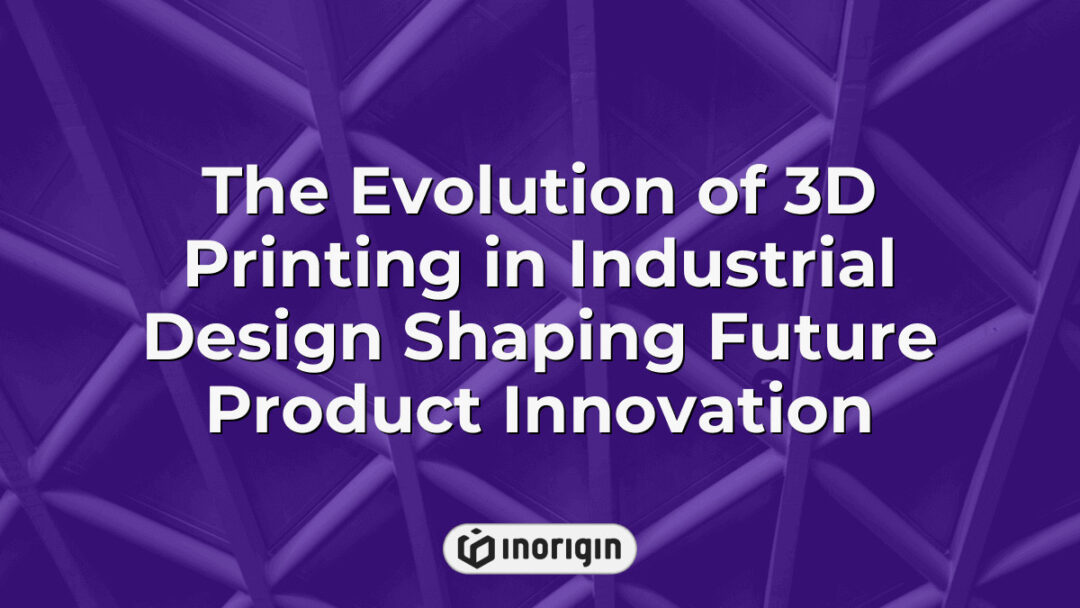Over the past few decades, industrial design has undergone a profound transformation with the emergence of 3D printing technology. This revolutionary process has not only streamlined production and prototyping but has also opened up endless possibilities for creativity and innovation in the field. As designers continue to push the boundaries of what is possible, the evolution of 3D printing in industrial design has become an integral part of shaping the future of manufacturing. From rapid prototyping to customized products, this cutting-edge technology has proven to be a game-changer, allowing for faster development cycles and more intricate designs than ever before.
| Aspect | Key Takeaway |
|---|---|
| Focus Keyword Overview | The evolution of 3D printing in industrial design has revolutionized product development by enabling rapid prototyping and the creation of intricate, customized designs. |
| Historical Origins | 3D printing began in the early 1980s with Chuck Hull’s invention of stereolithography, marking the foundation for modern industrial design innovations. |
| Impact on Design Processes | 3D printing allows designers to swiftly test and refine concepts, producing complex geometries that enhance functionality and user customization. |
| Material and Technology Advancements | Ongoing advancements in materials and printing techniques expand industrial design possibilities, improving durability and aesthetic quality. |
| Future Trends | Emerging innovations focus on eco-friendly materials and enhanced software tools to streamline workflows and promote sustainable product development. |
| Industry Application | Integrating 3D printing with engineering and simulation enables studios like Inorigin to deliver market-ready, functionally robust, and visually compelling products. |
| Efficiency and Customization | By combining advanced FDM and DLP resin printing processes, industrial designers can achieve faster production cycles with bespoke solutions tailored to client needs. |
The Origins Of 3D Printing In Industrial Design
The roots of 3D printing in industrial design can be traced back to the early 1980s, when Chuck Hull invented stereolithography. This groundbreaking technology allowed for the creation of three-dimensional objects layer by layer, paving the way for a revolution in manufacturing and design. Like a seed planted in fertile soil, this innovation took root and began to grow, gradually spreading its branches into various industries. As time passed, advancements in materials and processes further fueled the growth of 3D printing, leading to its integration into industrial design practices.
As the concept of 3D printing continued to evolve, it became increasingly clear that this technology was not just a passing trend, but rather a game-changer with immense potential. Its ability to swiftly produce prototypes and complex geometries made it an indispensable tool for designers and engineers alike. The origins of 3D printing may have been humble, but they laid the groundwork for a transformative shift in how products are conceptualized and brought to life.
The Impact Of 3D Printing On Industrial Design Processes
The impact of 3D printing on industrial design processes has been nothing short of revolutionary. With the ability to quickly and cost-effectively prototype designs, designers can now experiment with a wide range of concepts before committing to final production. Additionally, the flexibility of 3D printing allows for the creation of complex geometries and intricate details that were previously impossible or prohibitively expensive to produce using traditional manufacturing methods. As a result, products are becoming more customized and tailored to specific user needs, leading to higher levels of customer satisfaction and brand loyalty.
Looking towards the future trends and innovations in 3D printing for industrial design, it is clear that this technology will continue to push boundaries and open up new possibilities for designers.
Future Trends And Innovations In 3D Printing For Industrial Design
As we look towards the future of industrial design, one cannot help but marvel at the potential advancements in 3D printing technology. On one hand, we have seen how 3D printing has already revolutionized traditional manufacturing processes, allowing for greater customization and faster production times. However, on the other hand, there is still so much untapped potential waiting to be explored. With ongoing research and development, it is exciting to think about the possibilities of using new materials and techniques in 3D printing that could further enhance the capabilities of industrial designers.
Furthermore, as we delve deeper into the realm of future trends and innovations in 3D printing for industrial design, it becomes apparent that sustainability will play a crucial role. The utilization of eco-friendly materials and methods in 3D printing can lead to more environmentally conscious products and designs. Additionally, advancements in software and hardware technologies are expected to streamline the entire design process, making it more efficient and accessible for designers to bring their ideas to life through 3D printing.
In essence, the future landscape of industrial design with 3D printing holds countless opportunities for creativity, efficiency, and sustainability. As technology continues to evolve at a rapid pace, we can only anticipate even more groundbreaking innovations that will further shape the way we approach design in various industries.
Conclusion
In conclusion, it’s amazing to see how 3D printing has revolutionized industrial design. Who would have thought that a simple idea could lead to such a game-changing technology? The future of 3D printing in industrial design is certainly something to look forward to, and I can’t wait to see what new innovations will come next!
Related posts:
- Precision Engineering Breakthroughs With an Industrial 3D Printer at Inorigin
- Industrial 3D Printers Revolutionizing Manufacturing with Advanced Materials and Precision Engineering
- How Can Industrial Design Impact Your Product’s Market Success in Shaping Consumer Appeal and Brand Differentiation
- Precision Engineering and Material Innovations in Engineered Industrial Products at Inorigin
- How Can Industrial Design Enhance Your Product’s Appeal by Blending Innovation and User Experience
- How Can Industrial Design Impact Product Aesthetics Through Material Choices and User Experience Integration




